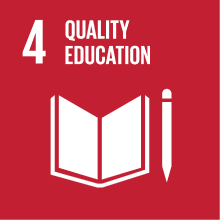INTRODUCTION TO TRANSLATION FOR THE PUBLISHING INDUSTRY AND FOR SPECIAL PURPOSES (SPANISH)
- Academic year
- 2025/2026 Syllabus of previous years
- Official course title
- AVVIAMENTO ALLA TRADUZIONE EDITORIALE, SETTORIALE SPAGNOLA
- Course code
- LT5280 (AF:517749 AR:321212)
- Teaching language
- Spagnolo
- Modality
- On campus classes
- ECTS credits
- 6
- Degree level
- Bachelor's Degree Programme
- Academic Discipline
- L-LIN/07
- Period
- 2nd Semester
- Course year
- 2
- Where
- TREVISO
- Moodle
- Go to Moodle page
Contribution of the course to the overall degree programme goals
The course is structured in two half-year modules and practical language classes aimed at strengthening the content of the theoretical module.
The main general objectives of the course are developing a metalinguistic knowledge of the Spanish language, with a particular focus on syntactic structures, from a contrastive perspective (Spanish-Italian). The overall objective is achieve a linguistic competence at B2 level - Common European Framework of Reference for Languages (CEFR).
Learning outcomes are assessed by means of a structured exam.
Expected learning outcomes
- Concepts of language mediation theory and translation
- Fundamentals of translation and contrastive linguistics (Spanish-Italian)
- Translation techniques and strategies
2. Ability to apply knowledge and understanding
- Know how to recognize and apply translation techniques in Spanish-Italian pair;
- Know how to recognize and apply translation strategies in the Spanish-Italian pair;
- Know how to apply the tools of linguistic analysis to make appropriate translation choices;
- Know how to identify the notion of “dominant” in translation;
- Understand and produce written and oral texts in Spanish at CEFR level B2 in editorial and sectorial contexts;
3. Autonomy of judgment
- Be able to perform linguistic and translation analysis of semi-specialised texts;
- Be able to give reasons in Spanish and their own linguistic and translation choices;
- Be able to implement communicative techniques and strategies from a B2 level translation perspective.
4. Communicative skills.
- Know how to recognize and explain the contrastive aspects of linguistic structures from a translation perspective;
- Know how to use the metalanguage of translation to describe some phenomena of the Spanish language;
- Know how to interact in communicative situations at B2 CEFR level;
- Know how to apply B2-level language skills to present issues addressed during the course;
- Know how to argue about basic notions of modern translation theory.
5. Learning skills.
- Undertake the study of the teaching material with a fair degree of autonomy;
- Be able to self-assess themselves in relation to the acquisition of linguistic and translation contents, as well as their competence in Spanish language;
- Be able to apply the knowledge acquired to start the profession of translator.
Pre-requirements
Contents
1. Spanish-Italian pedagogical translation:
2. Analysis of the main morphosyntactic dissimilarities from a translation and contrastive perspective (Spanish-Italian)
3. Verbs of change: classification, contrastive and translation aspects
4. Linguistic mediation: theory and practice from a Spanish-Italian contrastive perspective.
5. Notions of Translation Theory and Practice: approaches, methods, techniques, strategies
6. Development of the translation competence
7. Linguistic and translation analysis of semi-specialised and editorial texts.
Referral texts
Required texts
- Trovato, Giuseppe (2019). Mediación lingüística y enseñanza de español/LE. (segunda edición) Madrid: ArcoLibros.
Supplementary readings
- Barbero, J. C.; Bermejo, F.; San Vicente, F. (2012) Contrastiva. Grammatica della lingua spagnola spagnolo-italiano. Bologna: CLUEB.
- Bazzocchi, Gloria e San Vicente, Félix (2021). LETI. Lengua española para traducir e interpretar. Bologna: Clueb
- Lefèvre, Matteo (2015). La traduzione dallo spagnolo. Teoria e pratica. Roma: Carocci.
- Lefèvre, Matteo e Testaverde Tommaso (2011). Tradurre lo spagnolo. Roma: Carocci.
- Real Academia Española (2011/ últ. ed.). Nueva gramática básica de la lengua española. Madrid: Espasa [parte III]
Assessment methods
1. pedagogical translation or translation of texts of varying length of from and into Spanish;
2. multiple choice;
3. brief discussion of basic translation theory concepts analysed during the course.
4. filling the gap.
The minimum score to be able to pass the written test is set at 18/30.
Type of exam
Grading scale
INSUFFICIENT
≤17 - Inadequate, fragmentary and deficient knowledge of content, which is not understood or is understood and reworked only partially. Inappropriate thinking skills and exposition.
SUFFICIENT
18 - Very uncertain knowledge of content, which is necessarily to be consolidated, and which is confusedly understood and reworked. Ability to reflect and expound.
19 - Confused knowledge of content, which needs to be consolidated, and which is understood and reworked in a confused manner. Sufficient reflection and exposition skills.
20 - Sufficient content knowledge, which still needs to be partially consolidated, and which is understood and reworked in a manner that is not always entirely adequate. Sufficient reflection and exposition skills.
DISCRETE
21 - More than sufficient knowledge of content, which is understood and reworked albeit with some uncertainties. Fair reflection and exposition skills.
22 - Fair knowledge of content, which is understood and reworked with some uncertainties. Fair reflection and exposition skills.
23 - More than fair knowledge of content, which is understood and reworked with some uncertainties. Fair reflection and exposition skills.
GOOD
24 - Correct knowledge of content, which is understood and reworked albeit with some uncertainty. Good reflective and expository skills.
25 - Correct knowledge of content, which is understood and reworked fairly confidently and coherently. Fair reflection and exposition skills.
26 - Complete knowledge of content, which is understood and reworked in a fairly confident and coherent manner. Fair reflection and exposition skills.
VERY GOOD
27 - Complete knowledge of content, which is understood and reworked in a confident, cohesive and coherent manner. Remarkable reflective and expository skills.
28 - Complete and thorough knowledge of content, which is understood and reworked in a confident, cohesive and coherent manner. Remarkable reflective and expository skills.
EXCELLENT
29 - Comprehensive and thorough knowledge of content, which is understood and reworked in a confident, cohesive and coherent manner with full autonomy and personal insights. Excellent reflective and expository skills, albeit with minor imperfections.
30 - Extensive and thorough knowledge of content, which is understood and reworked in a secure, cohesive and coherent manner with full autonomy and personal insights. Excellent reflective and expository skills.
30 e Lode (with high praise) - Extremely thorough and cross-cutting knowledge of content, which is understood and reworked in total autonomy and with personal contribution, with full command of specialized language and excellent ability to make interdisciplinary connections.Full capacity for reflection and exposition.
Teaching methods
Further information
2030 Agenda for Sustainable Development Goals
This subject deals with topics related to the macro-area "Human capital, health, education" and contributes to the achievement of one or more goals of U. N. Agenda for Sustainable Development


